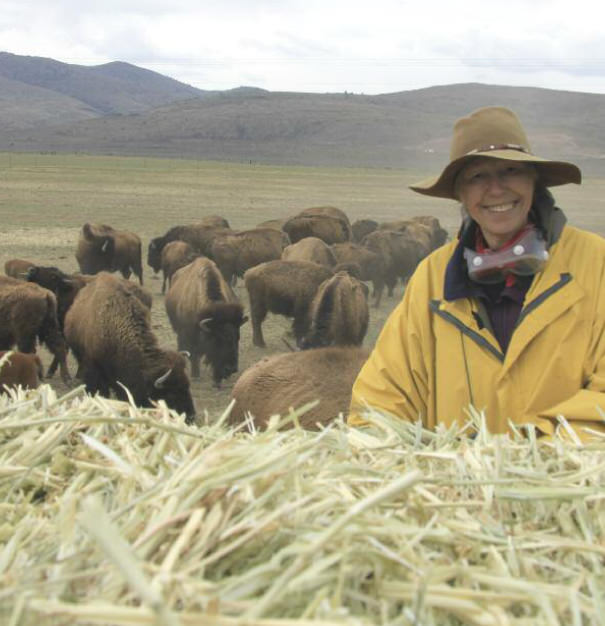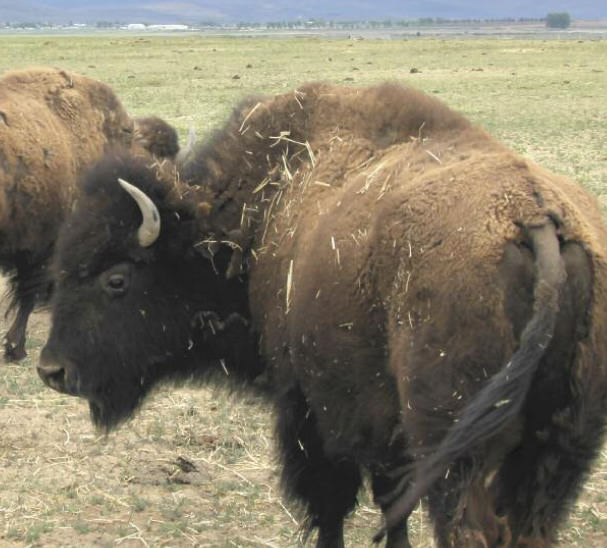cover
WHERE THE BISON ROAM
The Lindners share the joys and trials of ranching.
WRITTEN AND PHOTOS BY JORDAN CLARY
Few of us are willing to listen to that quiet voice inside, the one that questions whether we’re living the life we should. For Kathy and Ken Lindner of Lindner Bison, the answer to what makes an authentic life has been their driving force as they pursue their dream of raising healthy, grass-fed bison.
When Kathy and Ken met in 1994, they both held corporate jobs in a national designing and manufacturing firm. Kathy also had just been diagnosed with breast cancer. It was out of this strange melding of the worst and the best life can offer that they laid their path of raising bison.
Both yearned for a life where they could make their living off the land. Kathy had tasted bison meat for the first time a few years earlier in Montana. She was impressed by both its flavor and how easily it was digested. After some initial research, she and Ken began to experiment with cooking bison meat, including mixing it with turkey for a burger they called bisurkey. What began as an interest soon turned into a passion as the couple threw themselves into researching bison ranching, asking questions, and visiting ranchers and meat processors.
In 1997, Kathy and Ken launched Lindner Bison with four bison they boarded on a ranch in South Dakota. In 2004, they bought the 225-acre Heritage Ranch in Lassen County (about 90 miles north of Reno), and moved their growing herd. For several years, they commuted twice a month, driving 10 hours north from their home in Southern California. In November 2012, the Lindners finally moved onto the ranch full time where, today, there usually are between 100 and 150 bison. The animals live together in family groups, something Kathy and Ken believe is important for bison’s health and well-being.

Ranch Life
 With no background in ranching, the Lindners are on a continual journey of educating themselves and are at the forefront of humane raising and harvesting of bison. While they have learned from many, Kathy says their main teachers have been the bison themselves. In addition to allowing the herd to roam and form their natural family groups, the Lindners do not castrate or de-horn their bulls. Kathy says this creates a natural pecking order, which is beneficial to the herd.
With no background in ranching, the Lindners are on a continual journey of educating themselves and are at the forefront of humane raising and harvesting of bison. While they have learned from many, Kathy says their main teachers have been the bison themselves. In addition to allowing the herd to roam and form their natural family groups, the Lindners do not castrate or de-horn their bulls. Kathy says this creates a natural pecking order, which is beneficial to the herd.
There have been setbacks as well as successes. A recent blow came when the 34-year-old well casing developed a hole, which let in sand and gravel, clogging the lines until they could no longer pump water.
“The well has been very productive and reliable,” Ken says. “It’s unfortunate that this has happened.”
However, both Kathy and Ken stress their intention to persevere. They’re essentially a two-person operation and are determined to overcome the obstacles as they have others.
“We’ve encountered all kinds of difficulties over the years,” Ken says. “And we’ve overcome all of them on our own dime. Now we’ve gotten into something we can’t do on our own.”
(The Lindners launched an online fundraising campaign in November 2013 at Indiegogo.com in an effort to raise the estimated $150,000 needed to buy pumps and new casings to restore the well. At press time, their Water for Bison campaign had raised about 97 percent of what’s needed. The couple still is accepting donations. For details, call 530-254-6337 or email Klindner@linderbison.com.)
The Gift of Bison
Kathy and Ken both speak of the disconnect that comes from buying packaged meat in the supermarket.
“There have been a lot of people we’ve been blessed to have in our lives who have really helped us define who we are, why we do what we do the way we do it,” Kathy says. “We’ve learned a lot selling at farmers’ markets. Unwittingly, we found ourselves in the middle of this food movement, and the values and questions our customers came to us with aligned with our own core values.”
These values include maintaining standards and ethics in the way their bison are raised, harvested, and sold. Kathy says a humane harvest on the ranch “honors the bison’s wild nature.” Ken says this creates far less stress on the individual animals and on the herd. Both Lindners are at the harvests whenever possible. They see it as their way of honoring the animals.
They like to maintain a connection with their customers as well. Most of their sales come from farmers’ markets, although they also ship their meats. A description of their products can be found on their website, Lindnerbison.com; customers are asked to send an email to Klindner@lindnerbison.com to order. Kathy says this is deliberate, as it makes the exchange a little more personal. She can ask questions to find out more about the customers and how the Lindners can best meet their needs.
It’s all part of staying connected and living the authentic life the Lindners have chosen.
Jordan Clary is a Reno freelance writer who enjoys exploring the high desert. While hiking to some petroglyphs one day, she became curious about a herd of bison, which led to her introduction to Kathy and Ken Lindner.
The Lindners wrote a book about their journey from corporate America to bison ranching called Standing Into the Storm. You can find it — along with their bison meat — at the Great Basin Community Food Co-op in Reno. For details, visit www.greatbasinfood.coop
Bison Chili
(courtesy of Ken and Kathy Lindner. Serves 4 – 6)
1 pound grass-fed bison bulk burger
1 28-ounce can all-natural whole tomatoes
1 4-ounce can all-natural tomato paste
1 15½-ounce can dark red kidney beans
1 cup water
½ cup sliced mushrooms
½ cup chopped onions
½ cup chopped green peppers
2 teaspoons chili powder
½ teaspoon cumin
1 tablespoon brown sugar, or to taste
1 to 2 bay leaves
Dash cayenne pepper
Dash Tabasco
Salt to taste
Crumble meat into large frying pan and lightly brown.
Drain and rinse dark red kidney beans. Combine beans, onions, green peppers, and mushrooms in a large pot. Add whole tomatoes and break apart with fork. Add browned meat and all remaining ingredients. Gently stir.
Cover and simmer on low for 3 to 4 hours, adding water as desired for consistency.
For additional bison recipes, visit www.Lindnerbison.com


